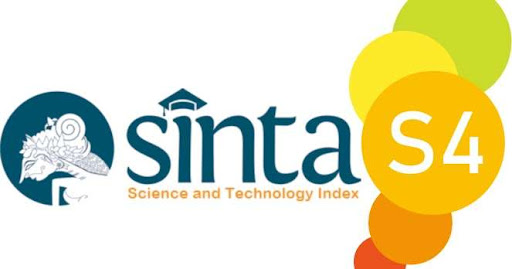Examining Illocutionary Acts: Male and Female Judges’ Comments on Indonesia’s Next Top Model
DOI:
https://doi.org/10.36733/sphota.v16i1.7176Keywords:
speech act, illocutionary act, gender, Indonesia’s Next Top ModelAbstract
This article delves into the linguistic and discursive aspects of communication, exploring the application of theories proposed by J.L. Austin (1975) and John Searle (1969) to understand the illocutionary acts employed by the male and female judges in Indonesia's Next Top Model. Within the context of reality television, where judgments and critiques are integral components, the language used by judges holds particular significance. This study aims to delve into the illocutionary acts employed by male and female judges in the popular television show "Indonesia's Next Top Model Cycle 3." The research method for this study employed a qualitative research approach, involved describing data from real-life situations or phenomena in their natural context within the reality show to explore the nuances and meanings of illocutionary acts in judges' comments. A sample of episodes from Indonesia's Next Top Model Cycle 3 was selected for analysis, ensuring representation of both male and female judges' comments. The dataset consisted of 266 utterances, 132 utterances from male judges' comments and 134 utterances from female judges' comments. In this study, it is found that the female judges had a greater variety of speech acts where they used all types of speech acts when giving comments. Whereas male judges only used three types of speech acts. The most dominant type of speech act of both male and female judges is assertives/representatives. It is inferred that both male and female judges are having or showing a confident and forceful personality in their utterances. In this study, it can also be seen that female judges are more to the point or overt than male judges.
References
Austin, J. L. (1975). How to do things with words. Oxford university press.
Basow, S. A., & Rubenfeld, K. (2003). “Troubles talk”: Effects of gender and gender typing.
Dorney, Z. (2007). Research method in applied linguistic: Quantitative, qualititative, and mixed methodologies. Oxford: Oxford University Press.
Lakoff, R. (1975). Language and Women’s Place. New York: Harper and Row.
Nasution, M. M., Izar, J., & Afifah, I. H. (2021). An Analysis of Hate Speech Against K-Pop Idols and Their Fans on Instagram and Twitter from The Perspective of Pragmatics. Journal of English Teaching and Linguistics, 2(2), 91-99.
Putri, R. A., Sartini, N. W., & Al Fajri, M. S. (2020). The analysis of illocutionary acts of judges’ comments in America’s next top model and Asia’s next top model competitions: A cross-cultural pragmatic study. Journal of Language and Linguistic Studies, 16(4), 1885-1898.
Rais, B., & Triyono, S. (2019). Pragmatic Analysis of Speech Acts on The Video of Prabowo Vs Jokowi-Epic Rap Battles Of Presidency. International Journal of Linguistics, Literature and Translation, 2(3), 150-157.
Rakhmawati, A., & Sulistyorini, I. (2021). Speech-acts Strategies of Indonesian Television Talkshow Host: Indonesian Lawyer Club Weekly Program. Lingua Didaktika: Jurnal Bahasa dan Pembelajaran Bahasa, 15(1), 36-49.
Searle, J. R. (1969). Speech acts: An essay in the philosophy of language (Vol. 626). Cambridge university press.
Syah, N. A., Djatmika, D., & Sumarlam, S. (2017). The politeness of directive speech acts in Satu Jam Lebih Dekat on TV One (pragmatic approach). PRASASTI: Journal of Linguistics, 2(2), 300-315.
Utami, P. W., Darmayanti, N., & Riyanto, S. (2013). Expressive speech act of judges’ narratives in x-factor indonesia talent show on RCTI: A pragmatic study. International Journal of Language Learning and Applied Linguistics World (IJLLALW), 4(4), 543-561.













